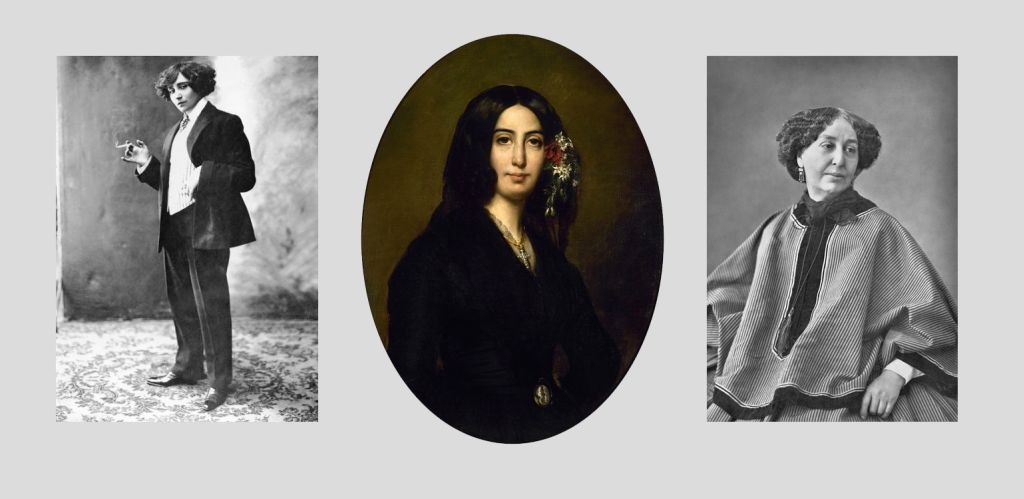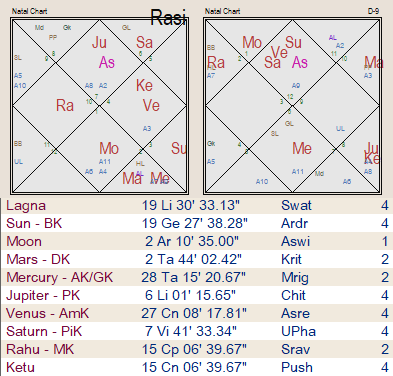
Amantine Lucile Aurore Dupin de Francueil (1 July 1804 – 8 June 1876), best known by her pen name George Sand was a French novelist, memoirist and journalist. One of the most popular writers in Europe in her lifetime, being more renowned than either Victor Hugo or Honoré de Balzac in England in the 1830s and 1840s. Sand is recognised as one of the most notable writers of the European Romantic era. She has more than 50 volumes of various works to her credit, including tales, plays and political texts, alongside her 70 novels.
Sand was one of many notable 19th-century women who chose to wear male attire in public. In 1800, the police chief of Paris issued an order requiring women to apply for a permit in order to wear male clothing. Some women applied for health, occupational, or recreational reasons (e.g., horseback riding), although many women chose to wear trousers and other traditional male attire in public without receiving a permit.
Sand obtained a permit to wear men’s clothing in 1831, justifying it as being less expensive and far sturdier than the typical dress of a noblewoman at the time. In addition to being comfortable, Sand’s male attire enabled her to circulate more freely in Paris than most of her female contemporaries and gave her increased access to venues that barred women, even those of her social standing. Also scandalous was Sand’s smoking tobacco in public; neither peerage nor gentry had yet sanctioned the free indulgence of women in such a habit, especially in public.
While some contemporaries were critical of her comportment, many people accepted her behaviour—until they became shocked with the subversive tone of her novels. Those who found her writing admirable were not bothered by her ambiguous or rebellious public behaviour. In 1831, at the age of 27, she chose her pseudonym George Sand. “Sand” was derived from the name of her lover and fellow writer Jules Sandeau, as the pair had previously co-authored a novel under the pseudonym J. Sand. Victor Hugo commented, “George Sand cannot determine whether she is male or female. I entertain a high regard for all my colleagues, but it is not my place to decide whether she is my sister or my brother.
Work and popularity-
Sand’s first published novel Rose et Blanche (1831) was written in collaboration with Sandeau. She subsequently adopted, for her first independent novel, Indiana (1832), the pen name that made her famous – George Sand.
At the age of 27, Sand was Europe’s most popular writer of either gender, more popular than both Victor Hugo and Honoré de Balzac in England in the 1830s and 1840s, and she remained immensely popular as a writer throughout her lifetime and long after her death. Early in her career, her work was in high demand; by 1836, the first of several compendia of her writings was published in 24 volumes. In total, four separate editions of her “Complete Works” were published during her lifetime.
George Sand advocated for women’s rights and passion, criticized the institution of marriage, and fought against the prejudices of a conservative society. She was considered scandalous because of her turbulent love life, her adoption of masculine clothing, and her masculine pseudonym.
Drawing from her childhood experiences of the countryside, Sand wrote the pastoral novels La Mare au Diable (1846), François le Champi (1847–1848), La Petite Fadette (1849), and Les Beaux Messieurs de Bois-Doré (1857).[45] A Winter in Majorca described the period that she and Chopin spent on that island from 1838 to 1839. Her other novels include Indiana (1832), Lélia (1833), Mauprat (1837), Le Compagnon du Tour de France (1840), Consuelo (1842–1843), and Le Meunier d’Angibault (1845).
Theatre pieces and autobiographical pieces include Histoire de ma vie (1855), Elle et Lui (1859, about her affair with Musset), Journal Intime (posthumously published in 1926), and Correspondence. Sand often performed her theatrical works in her small private theatre at the Nohant estate.
Multiple love affairs –
In 1822, at the age of eighteen, Sand married (François) Casimir Dudevant, an illegitimate son of Baron Jean-François Dudevant. She and Dudevant had two children: Maurice and Solange (1828–1899). In 1825, she had an intense but perhaps platonic affair with the young lawyer Aurélien de Sèze. In early 1831, she left her husband and entered upon a four- or five-year period of “romantic rebellion”. In 1835, she was legally separated from Dudevant and took custody of their children.
Sand had romantic affairs with the novelist Jules Sandeau (1831), the Polish-Russian Prince Norbert Przanowski (February 1832 – Summer 1833) the writer Prosper Mérimée, the dramatist Alfred de Musset (summer 1833 – March 1835), Louis-Chrysostome Michel, the actor Pierre-François Bocage, the writer Charles Didier, the novelist Félicien Mallefille, the politician Louis Blanc, and the composer Frédéric Chopin (1837–1847). Later in her life, she corresponded with Gustave Flaubert, and despite their differences in temperament and aesthetic preference, they eventually became close friends. Sand was also close friends with the actress Marie Dorval. Theater critic Gustave Planche reportedly warned Sand to stay away from Dorval. Likewise, Count Alfred de Vigny, Dorval’s lover from 1831 to 1838, warned the actress to stay away from Sand, whom he referred to as “that damned lesbian”. Sand spent the winter of 1838–1839 with Frédéric Chopin in Mallorca at the (formerly abandoned) Carthusian monastery of Valldemossa. The trip to Mallorca was described in her Un hiver à Majorque (A Winter in Majorca), first published in 1841. Sand and Chopin also spent many long summers at Sand’s country manor in Nohant from 1839 to 1846] There, Chopin wrote many of his most famous works.
In her novel Lucrezia Floriani, Sand is said to have used Chopin as a model for a sickly Eastern European prince named Karol. He is cared for by a middle-aged actress past her prime, Lucrezia, who suffers greatly through her affection for Karol.
Death-
George Sand faced financial difficulties in last years of her life but did not stop writing. She spent last decade mostly in Nohant. She even exercised the functions of village doctor, having studied anatomy and herbal remedies with a Doctor Deschartres. In 1864, Sand took residence in Palaiseau together with her beloved Manceau for a couple of months, where she tended him in his decline. Sand died at Nohant, near Châteauroux, in France’s Indre département on 8 June 1876, at the age of 71.
Birth Chart of George Sand-











